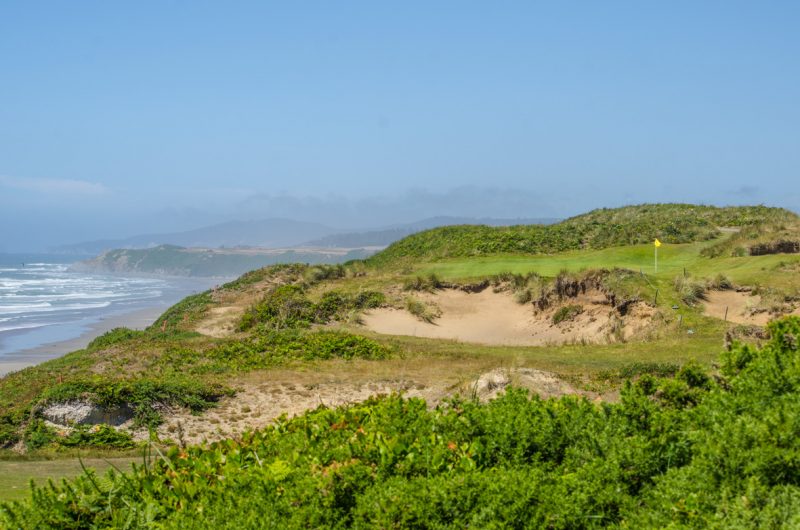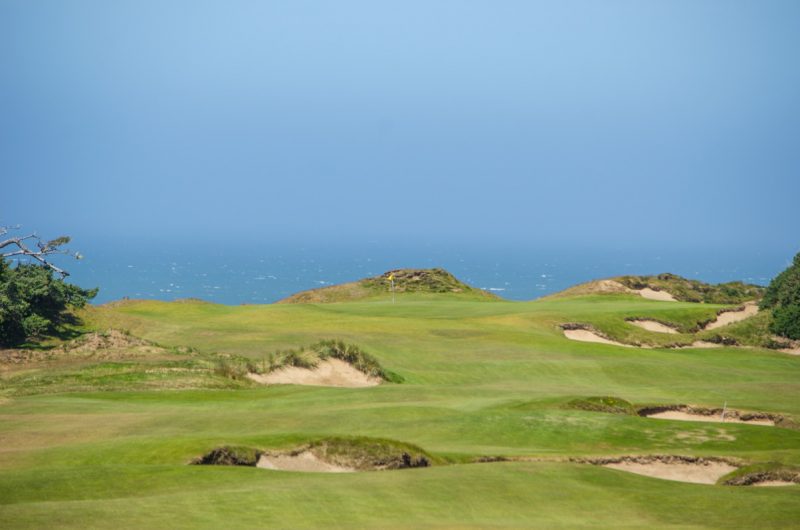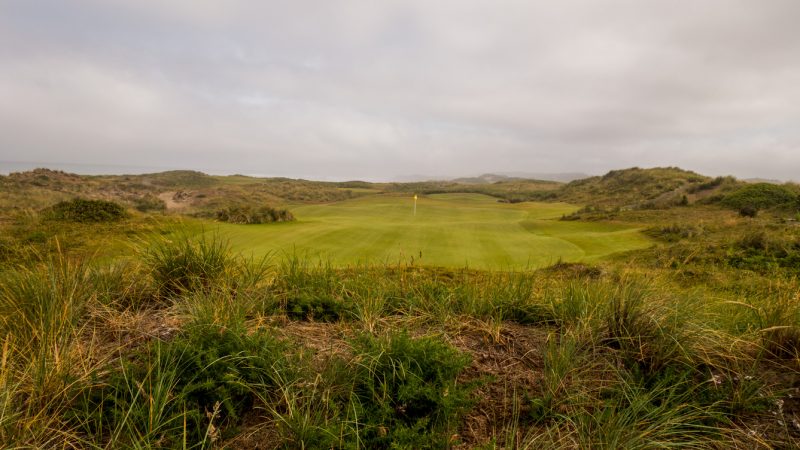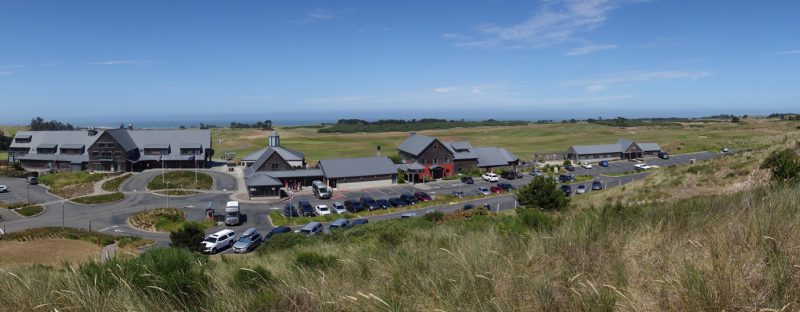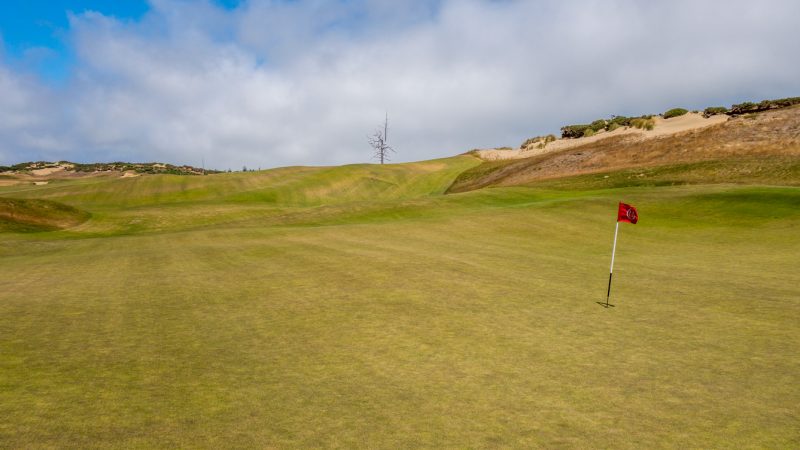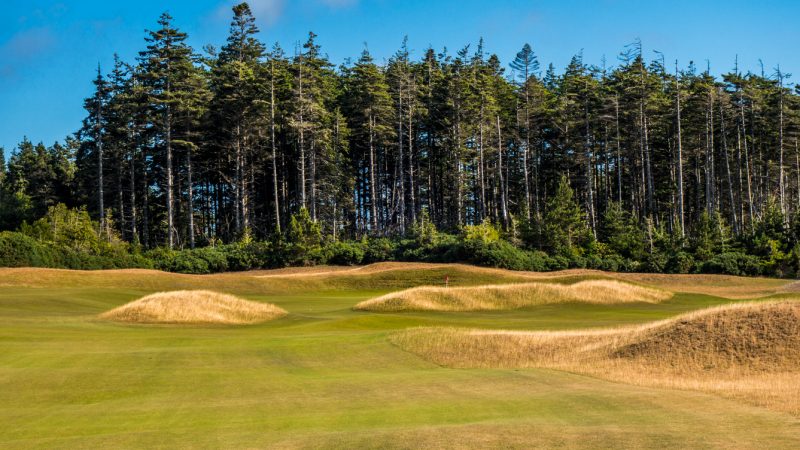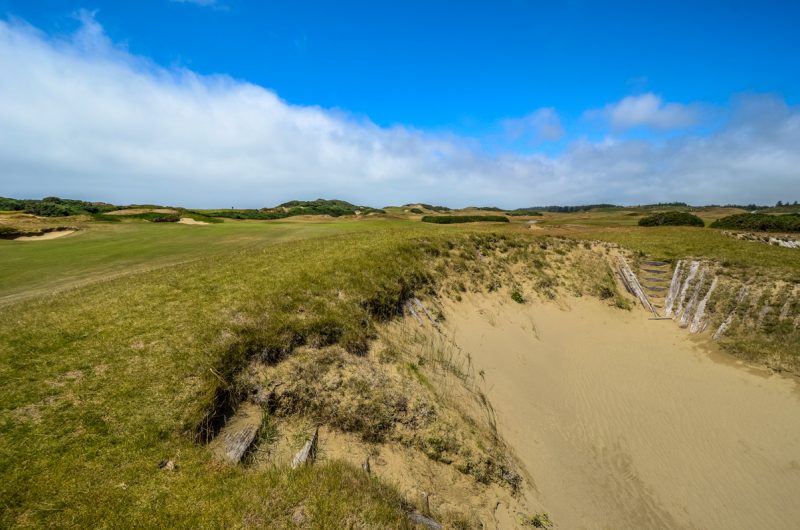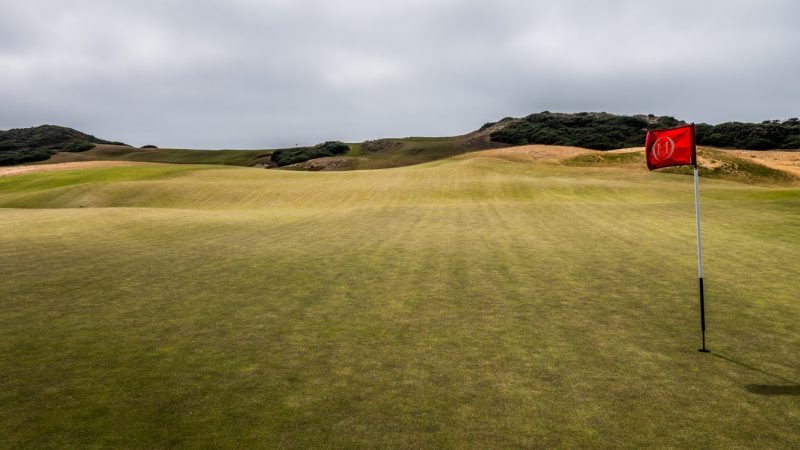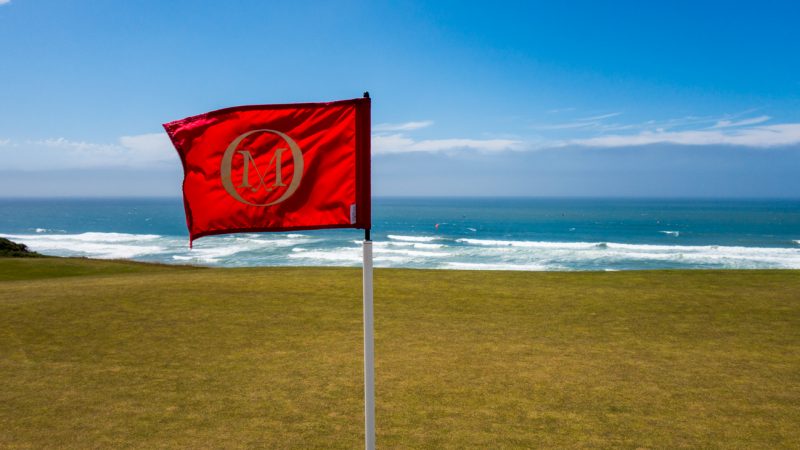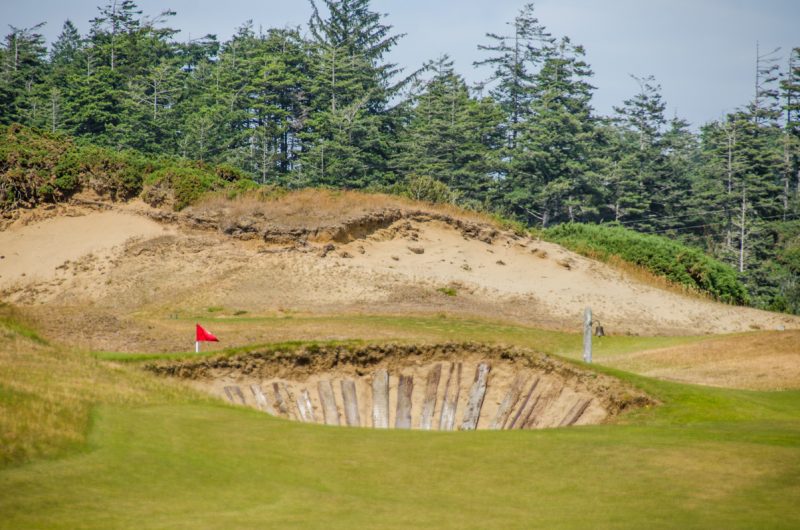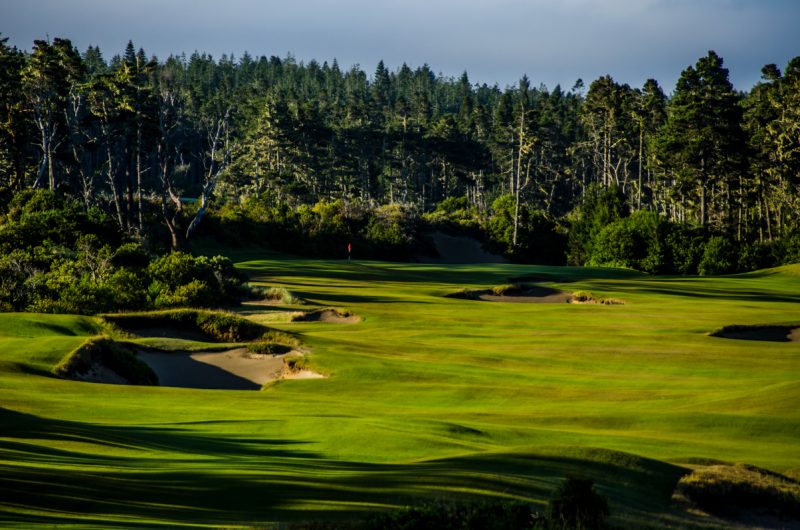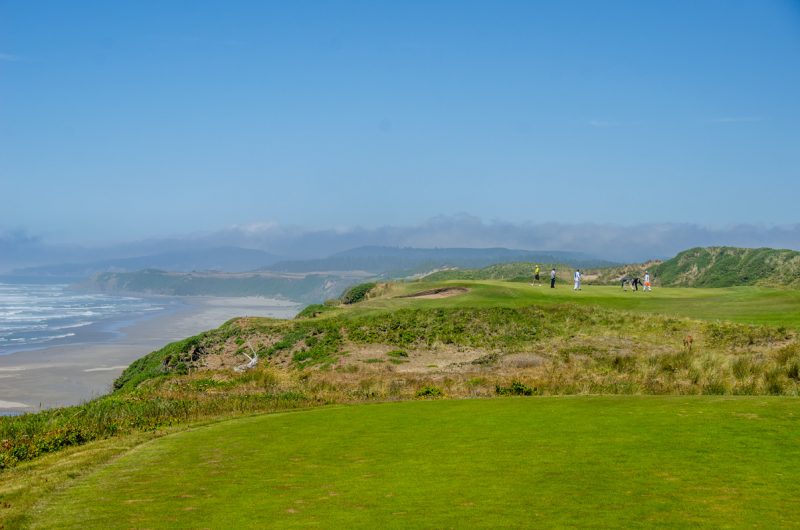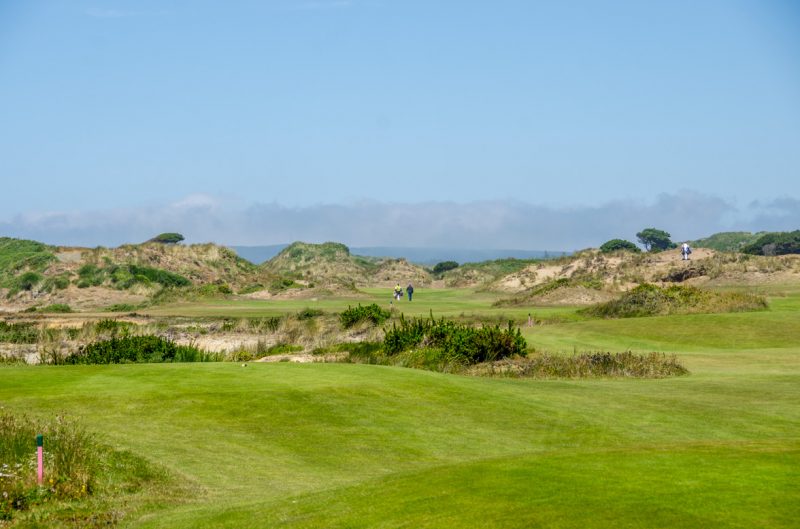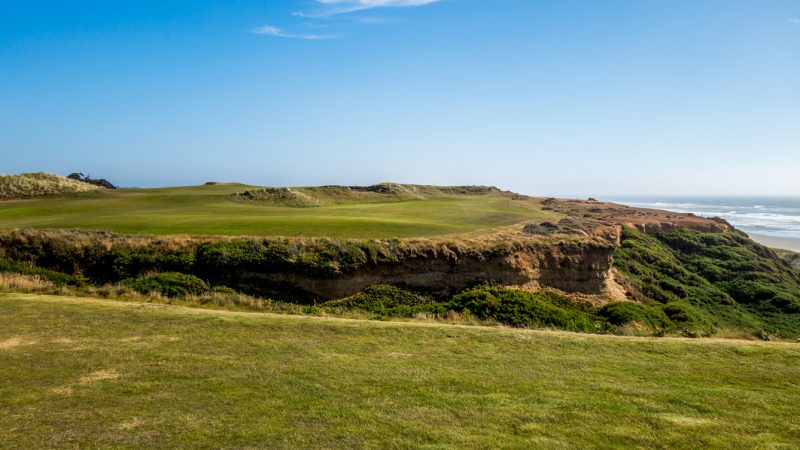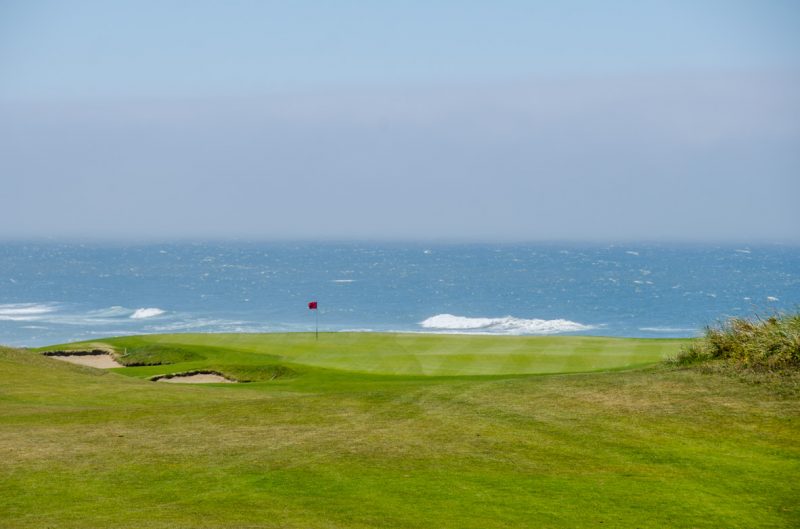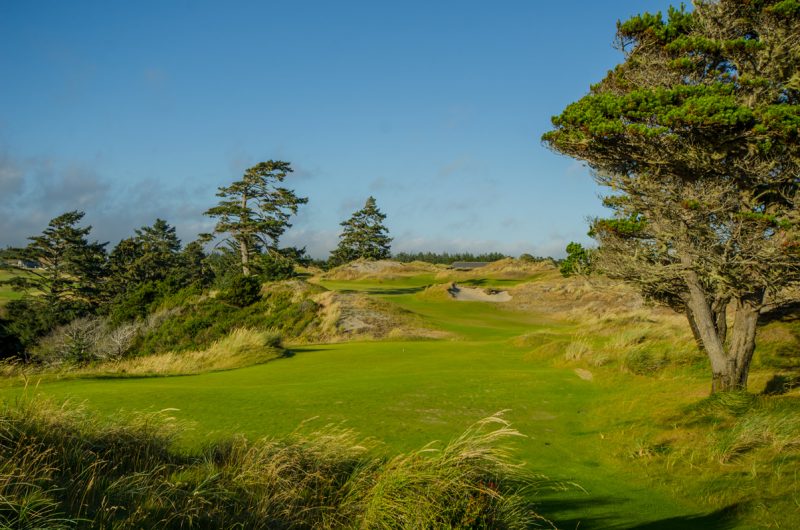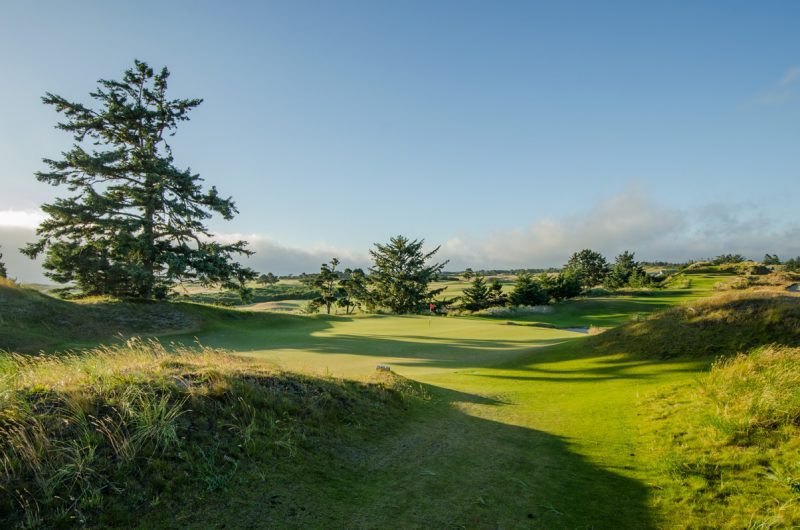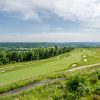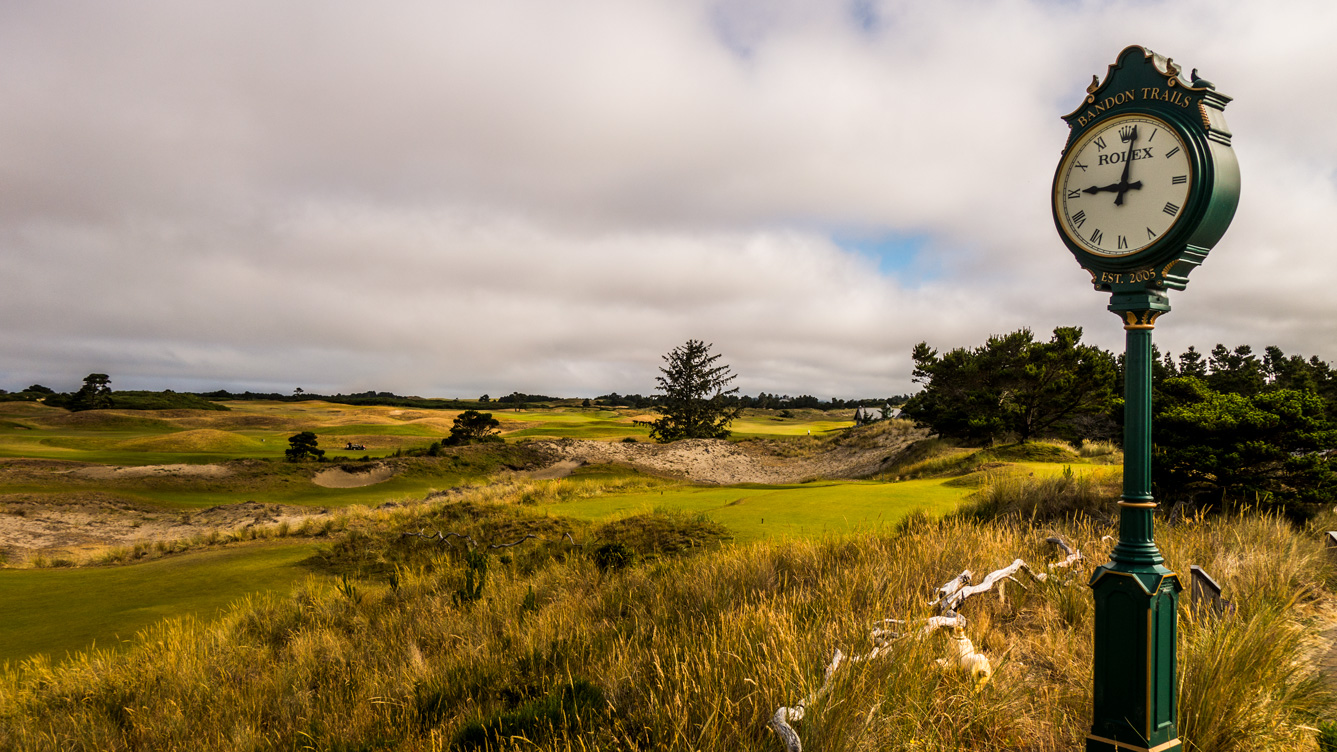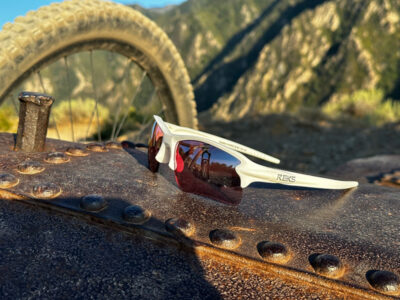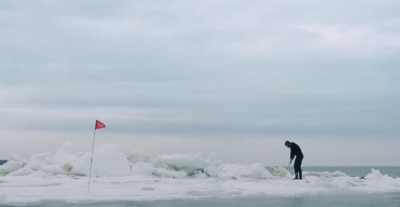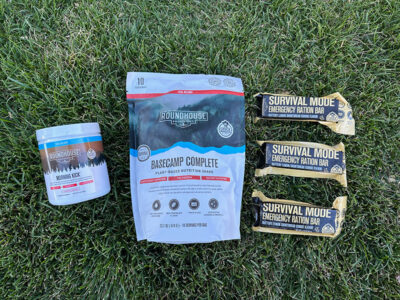Review: Pacific Dunes Golf Course at Bandon Dunes Golf Resort
Categories: Course Reviews • Golf Course Architecture • Golf Courses • Golf For Women • HOG World Tour • Reviews • Travel
Tags: #GolfBlogWorldTour • Bandon Dunes • Oregon
I’m continuing with my reviews of all the tremendous courses at Bandon Dunes Golf Resort with Pacific Dunes Golf Course. Pacific Dunes opened in 2001 and was designed by one of golf’s best modern designers, Tom Doak. I’ve grown to be a big fan of Tom Doak’s work and I’ve experienced a good number of his courses, from Ballyneal in Holyoke, Colorado to The Loop at Forest Dunes in Michigan.
Pacific Dunes Overview
Pacific Dunes is par-71 18-hole course which tips out at 6,633 yards from the Black tees. There are four other sets of tees for golfers of varying skill level, age and gender. The shortest Orange tee is a tad over 5,000 yards. Course slope from the Black tees is 142 with a course rating of 73.0.
The golf course is located along miles of beautiful shoreline amongst natural dunes that link the ocean to the inland. Links. Add the challenging course rating to Pacific Northwest winds that would make Scotland proud. Then mix in a tremendous landscape of dunes and you have a serious but aesthetically stunning test of links style golf.
Tee
Shotmaking from the tees at Pacific Dunes requires strategy, execution, grit and sometimes a little luck. Placing tee shots in the proper positions in the fairway will lead to better looks at the green or next target. Many of the bunkers and undulations of the fairway are slightly hidden or masked from the tee. The landing areas may look small from the tee but properly placed shots will have plenty of room.
Strategy in terms of aiming points and club selection is crucial to avoid catching well placed fairway bunkers, natural hazards, dunes, and native areas.
Fairway
The fairways at Pacific Dunes are hard and fast. They offer up fairly wide landing areas, but are guarded by bunkers and well placed natural features. Outside the fairway is not a recommended place to go, especially with the large gorse bush areas. Yes gorse. When looking out at the gorse and the terrain from the fairway I could swear I’m in Scotland.
Approaching the greens from the fairway is challenging. Often the golfer must make an educated guess as to how much a particular shot will release and place the approach to the proper point. This landing spot could be on the front of the green for a middle to back pin, or even 20-30 yards short of the green for shots that will have a lot of release.
Green
In true links fashion and just like the Old Course in St. Andrews, it is difficult to tell where the fairway ends and the green begins. I love this type of golf.
Putting at Pacific Dunes is a thrill. Each green’s undulations present a solid challenge for the golfer in picking the proper line and speed. It’s also easy to get careless and putt it onto a wrong tier, or even off the green and down to a collection area. Even worse, I saw a few putts go off into bunkers.
Don’t get me wrong though. The greens aren’t too penal or severe. A good putter (like I consider myself) can navigate most any position in two putts.
The collection areas around the putting surfaces give the golfer the option to putt, chip or pitch. Putting worked best for me in terms of distance control and shot difficulty but there were some occasions where I had to fly the ball over a bunker. A high level of concentration is needed in those situations, due to the hard greens and the hard ground beneath the ball.
Strategy
Some holes tempt the golfer to go for it, like the short 316 yard par-4 6th. On one of my rounds on Pacific Dunes, going for it worked. I missed the green short right and put a nice lob wedge close to the pin where I made a satisfying birdie.
Another super fun short par-4 is the 338 yard 16th. On one round I had a hard left-to-right helping wind from the tee. I blasted my driver over the corner and rode the wind to about 20 yards from the green. From there I didn’t even use a wedge. I putted from the fairway to the green, as is almost always an option.
Even short game shots around the putting surfaces can require quite a bit of strategy and creativity, not to mention a lot of help from flat out skill! Check out the video below from the par-3 11th.
Above: John Retzer (GolfBlogger.com) plays a nice hybrid down the slope from the back right of the green. Then John Duval (intothegrain.com) hits a tremendous bunker shot from the right bunkers. And don’t forget to notice the ocean view. Fantastic.
Amenities
Pacific Dunes is part of Bandon Dunes Golf Resort. The resort offers hundreds of acres of golf over six world class courses. Supporting those courses is terrific lodging, food and beverage, spa, hiking, and more.
The practice areas at the resort are fantastic. The customer service at the practice areas, specifically my new friend Melanie Bowman, is unmatched.
Final Thoughts
Pacific Dunes is pure golf. It is golf the way it was meant to be: Walking only. No cart paths. Hard and fast. Aesthetically stunning. Physically and mentally challenging. Rewarding. Memorable.
Pacific might just be my favorite course at Bandon Dunes Golf Resort. But picking a favorite there is like picking the best out of five courses that rank at an 11 on a 1-10 scale.
Related
Bandon Dunes Golf Course Review
Review: Old Macdonald Golf Course at Bandon Dunes Golf Resort
Categories: Course Reviews • Golf • Golf Course Architecture • Golf Courses • Golf For Women • HOG World Tour • Reviews • Travel
Tags: #GolfBlogWorldTour • Bandon Dunes • Oregon
The fourth and newest (18 hole) course at Bandon Dunes Golf Resort is Old Macdonald. “Old Mac” was designed by Tom Doak and Jim Urbina and opened in 2010. Doak and Urbina were inspired on Old Mac’s design by golf course architect Charles Blair Macdonald (1855-1939). Macdonald is considered the father of American golf, having built the first full size 18-hole course in the country. Macdonald is famous for designing some of the country’s famous courses like Shinnecock Hills, National Golf Links of America, and the Old White Course at The Greenbrier.
Old Macdonald Stats
From the longest tees (Black), Old Macdonald runs 6,944 yards. The slope from the tips is 131 with a course rating of 74.4. The tips will challenge the best of golfers. There are four other tee sets to choose from, down to the shortest set which is 4,985 yards, 65.2 rating and 104 slope. A wise golfer can bite of just the right amount for his/her game by choosing the proper tee. I chose the Green tees: 6,320 yards, 71.6/125.
Tee
Tee shots at Old Mac are extremely fun and entertaining. There isn’t a ton of complexity to getting the ball into play on most holes, except perhaps the 3rd which is a blind shot over a hill. With a little help from the wind and the severe downhill, the green is reachable from the tee on this par-4. Doing so would require a precisely positioned tee shot down the left side, or a hard draw down the middle, just right of the dead marker tree (photo below).
From the tee the golfer can make a solid guess as to the best landing areas and angles for the next shot. The challenge is calculating whether or not the ball will reach the multitude of fairway bunkers or natural hazards in play. Course knowledge or the advice of a caddie is great in those situations.
Many tee shots offer sizeable elevation changes, making calculating proper yardages interesting. A good case is the par-3 8th hole which has an elevated tee box with the Pacific Ocean behind the tee. Pulling the right club there requires calculating the elevation change, hardness of the ground, and the often prevailing left-to-right wind.
Fairway
The fairways at Old Mac are fairly wide and present many “opportunities” for uneven lies or bunkered approach shots. They typically run hard and fast, like links golf should. The hard and fast style is my favorite. Well executed tee shots will find the fairway most of the time, though the finishing location may be in different positions than expected due to the hardness and undulation. Several holes provide multiple choices in terms of conservative and aggressive areas to play from.
The fairway bunkering at Old Mac is as artistic as it is penal.
There are a few score-wreckers out there so positioning shots in the fairway and away from the bunkers is a wise plan. Many of the bunkers have stairways for easier entrance and exit. If only getting the ball out of the bunkers was as easy.
Green
There is more green acreage at Old Macdonald than there is at the Old Course in St Andrews. That means a lot, since the old course has some of the biggest greens anywhere; certainly the biggest I’ve ever played.
Some of Old Mac’s greens have major undulations, like the previously mentioned par-3 8th (photo above) where a deep depression dissects the green. The par-4 18th has a tremendous punchbowl on the left side of the green which feeds approach shots or putts way right. It was fun to test out some shots there. I used a bit of that bowl effect to carve a 4-iron in from left to right and have the ball feed left to right. That led to an eventual birdie thanks to knowing the green.
Highlights
There are some nice ocean views on the par-4 7th green and 8th tee. Stopping there to soak in the spectacular views is highly recommended.
The course is rugged and challenging with a nice amount of elevation change. The unsheltered and open layout can lend itself to wind that would make Scotland proud.
There are some neat design quirks, like the green complex on the par-4 16th hole. The green can be hidden unless the player’s drive is placed way right in the fairway. But going too far right means bunkers. Gotcha. The look at the green can be intimidating, especially if the pin is cut left like on the picture below.
When done playing the 16th there’s a bell on the path to the 17th green (pole in the photo above). When approaching players hear the bell, they know the green is clear.
Final Thoughts
Old Macdonald rounds out the courses at Bandon Dunes tremendously with a great variation in style, feel, terrain, and aesthetics.
Old Mac is an extremely fun and challenging design which makes the golfer think, and offers different choices in terms of being aggressive or conservative. It can greatly reward well executed aggressive shots and will certainly penalize poor shots, or poor strategy. It’s a course that one could play 1000 times and never have the same shot twice on any hole. I only have 998 more rounds to go to confirm that theory.
Related
Talking Bandon Dunes on the Back 9 Report Podcast
Review: Bandon Dunes Golf Course at Bandon Dunes Golf Resort
Review: Bandon Preserve – 13-Hole Par-3 Course at Bandon Dunes Golf Resort
Talking Bandon Dunes on the Back 9 Report Podcast
Categories: Golf • Golf Courses • Golf For Women • Golf Life • Golf Lifestyle • HOG World Tour • Interviews
Tags: #GolfBlogWorldTour • Bandon Dunes
Below you can find the Back 9 Report podcast in which myself and fellow #GolfBlogWorldTour buddy Bill Cuebas (a.k.a. The Golfather) talk about our recent visit to the amazing Bandon Dunes Golf Resort. Enjoy. To go directly to the Bandon Dunes segment, scroll to the 94 minute mark.
Thanks to buddy Fred Altvater for inviting us on to talk about such a great subject!
Review: Bandon Dunes Golf Course at Bandon Dunes Golf Resort
Categories: Course Reviews • Golf • Golf Course Architecture • Golf Courses • Golf For Women • Golf Lifestyle • HOG World Tour • Reviews • Travel
Tags: #GolfBlogWorldTour • Bandon Dunes
Bandon Dunes Golf Course was the first course built on the incredible property that is Bandon Dunes Golf Resort. Bandon Dunes first offered up its challenge to golfers in 1999 and was designed by Scottish golf course architect David McLay Kidd. Brilliant idea having a Scottish designer work his magic on land which is quite similar to Scotland complete with ocean views, mild temperatures, wind, and even gorse. I’m sure Kidd felt right at home.
Location Location Location
Bandon Dunes is located about five hours southwest of Portland, Oregon, on the Oregon shoreline. Getting there is easiest via the airport in North Bend, a mere 40 minute drive. North Bend is likely not the cheapest option. One can typically fly into Portland for a fraction of the cost to North Bend, but then have to deal with the five hour drive. It’s quite scenic and goes by quickly though.
Bandon Dunes Design
David McLay Kidd’s design smoothly winds its way over the natural sand dunes with scenic overlooks, thrilling elevation changes, and a natural flow which is often overlooking the Pacific Ocean. Having played many of the great seaside courses in Scotland, the visual and stylistic similarities are stunning to me. Scotty could have beamed me to Kingsbarns Golf Links or Cruden Bay Golf Club from Bandon Dunes and I might have had a hard time telling the difference. Bandon Dunes even has some riveted bunkers. Riveted bunkers have steep walls which are made up of layers of sod, popular in the UK.
Par value at Bandon Dunes is 72, with the longest tees (Black) measuring 6,732 yards. The course rating from the tips is 74.1 with a slope of 143. Scottish translation: “She’s a challenging wee bugger.”
Seven of the 18 holes are waterside, ether running by it, ending up by it, or starting by it.
Tee
Tee shots at Bandon Dunes are challenging, interesting, and present the golfer with numerous options. All this while giving the golfer stellar surroundings and vantage points of the beautiful terrain as well as the Pacific Ocean. Different tee boxes not only change the yardages of the holes, they change the tee elevation and angles to the targets. I’m a big fan of variances like this, rather than having three sets of tees on one 30 yard flat rectangle of grass. This isn’t the local muni.
There are many situations which the tee shot is forced to carry over natural arroyos, canyons, or native sand areas. Nothing too extreme or unplayable from the proper tees, but challenging enough to get in a golfer’s mind and penalize a bad tee shot.
Fairway
Most fairways at Bandon Dunes are fairly wide and not overly difficult to hit, barring the 30mph winds I played in. The sloping and curvature of the fairways is smooth and natural, and can on occasion produce uneven lies. Errant tee shots will find some strategically placed, but not overly extreme bunkering or perhaps native dunes or washes.
There are a few fairways which are split or give the golfer different options like the 16th hole above. The golfer could layup short of the dunes dissecting the fairway, or try to blow a driver over the dunes favoring left. I chose latter, which I was successful in doing. But with the extreme tailwind I had, my drive went so far it went by the green, past the next tee box and off a cliff never to be found again. Strategy!
Green
The putting surfaces at Bandon Dunes are quite enjoyable and manageable. They’re an oasis amongst the ruggedness of the dunes. Natural sloping gives the golfer a chance to be creative when putting, or chipping. I found putting on the smooth surfaces at Bandon Dunes to be challenging enough for me to keep my focus to insure a one or two-putt, but not so crazy that I’d introduce 3-jacking or more by making small mistakes.
I appreciated that the green complexes offer a chance to putt from off the green and not force the golfer into a high shot unless there was a bunker or native area to carry.
Bandon Dunes Advice
I’m happy to offer a little advice for playing Bandon Dunes. First off this is a walking-only course. No carts (or buggies for you in the UK). Be ready for some solid walking on hard ground, and some minor elevation changes. Get a caddie to help you navigate the course, or snag a pull/push cart from the starter to make the walk a little easier and less tough on the back.
If your ball manages to find a gorse bush, let it go. Seriously. It’s not worth it.
Have your wind game ready.
Have your apparel game ready as well. Bring a sweater and some waterproof outerwear. The temperatures are mild all year, with the high temperatures reaching the 60’s in the summer.
Bring your camera and make sure your battery is fully charged. You’ll be glad you did when you’re at home looking back at the tremendous golf course and wonderful experience you enjoyed.
Amenities
Bandon Dunes starts and ends at the main lodge, where one can find numerous dining and lodging options and a finely stocked pro shop. A short shuttle ride away are the other Bandon Dunes courses, more lodging, and some of the best practice facilities in the world.
Final Thoughts
Bandon Dunes is a stellar and challenging golf experience. I appreciate playing the course more and more as I think back about each hole through my dozens of photos.
This is the course that started it all at Bandon Dunes Golf Resort. It’s a fantastic foundation which the resort has built upon and staked its claim as the #1 golf resort in America.
Related
Visit the HOG Bandon Dunes photo gallery.
13-hole par-3 Bandon Preserve course review.
Review: Bandon Preserve – 13-Hole Par-3 Course at Bandon Dunes Golf Resort
Categories: Course Reviews • Golf • Golf Course Architecture • Golf Courses • Golf For Women • HOG World Tour • Reviews • Travel
Tags: #GolfBlogWorldTour • Bandon Dunes • Bill Coore & Ben Crenshaw
I will be posting reviews of all the courses at Bandon Dunes Golf Resort over the next weeks. I decided to start with Bandon Preserve. Bandon Preserve is a 13-hole par-3 course. The Preserve is so fun I could play it all the time. There are so many creative ways to play the holes, most of which are less than 130 yards.
The Preserve was designed by famed golf course architects Bill Coore and Ben Crenshaw. This terrain is perfect for the Coore/Crenshaw style, which beautifully uses the existing terrain to produce a scenic, fun, and challenging layout.
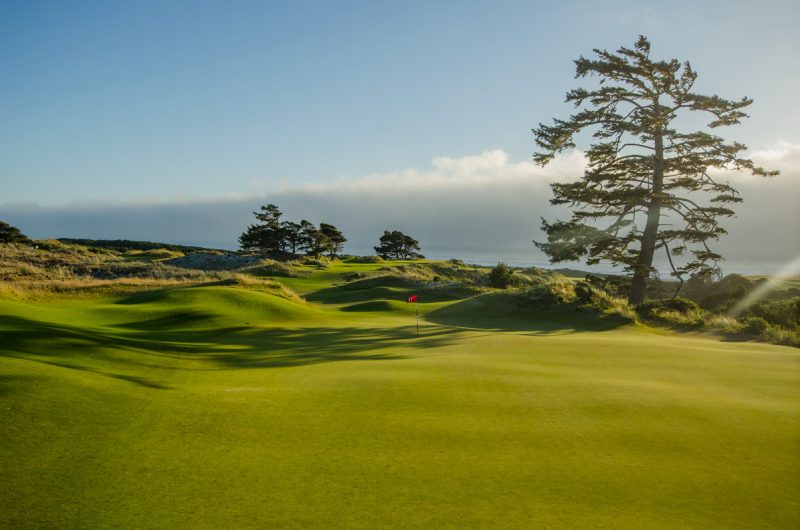
All net profits from green fees at Bandon Preserve go directly to Wild Rivers Coast Alliance (WRCA). WRCA is an organization that supports conservation, community, and economy on the southern Oregon Coast. The Preserve also helps to protect the plant species Silvery Phacelia. Silvery Phacelia is an endangered species which is threatened by non-native plants. The open area reclaimed by the Preserve help Silvery Phacelia flourish.
The Experience
When I played the Preserve the longest tee-to-pin yardage was less than 150 yards. Most of the tee shots were under 130 yards. One could easily carry 3-4 clubs, a couple of balls, and leave the golf bag in the room, barring any windy conditions. My round was very windy, and required me to hit a lot of extra club on a few of the holes that play to the north. I hit 7-iron a few times, which at Bandon is probably about a 175 yard club. Mind you, the length of the holes I was playing was more like 125 yards, but with several clubs’ worth of wind.
The course is extremely fun and challenging. Golfers can be creative with their shots, choosing multiple lines of attack to landing areas that funnel the shot to the desired location. Flying shots to the pin is possible if the golfer can generate a lot of spin. Like most links style greens, Preserve’s greens are hard and only shots with a lot of spin will stick.
The vibe at the Preserve is quick, fun, casual golf. Emphasis on fun.
13th Hole – Putter off the Tee
The final 13th hole is about 100 yards and the tradition is to play the hole entirely with a putter. Our group did it, and 3 of the 4 hit the green in regulation!
Final Thoughts
I shot my lowest score of the year on the Preserve! It helped that the course was only 13 holes of par-3’s.
Par-3 courses are becoming more and more popular. They take less time to play, cost the golfer less money, and take up less valuable land. The Preserve’s dunes/links style makes it so distinct and original. The course is visually stunning. The Preserve is right up there at the top of my par-3 courses list, along with Michigan’s Three Tops. Do not miss playing Bandon Preserve when you are on your Bandon Dunes golf trip.
Gallery
Visit the Hooked on Golf Blog Bandon Preserve photo gallery.
1 2 Next »

